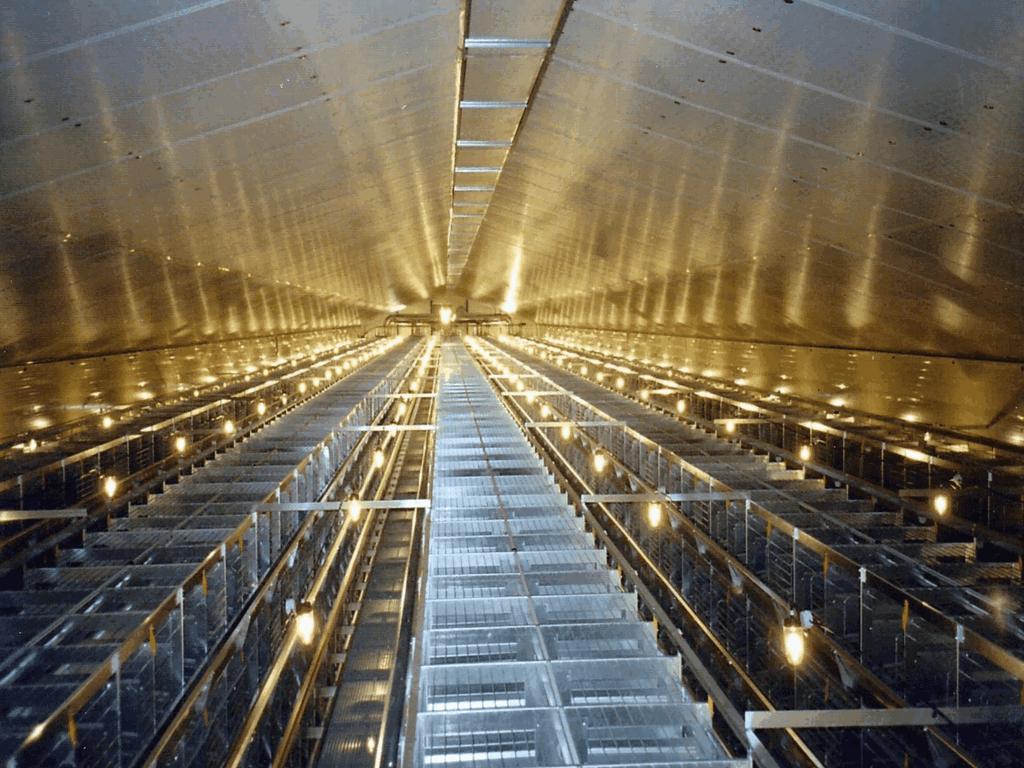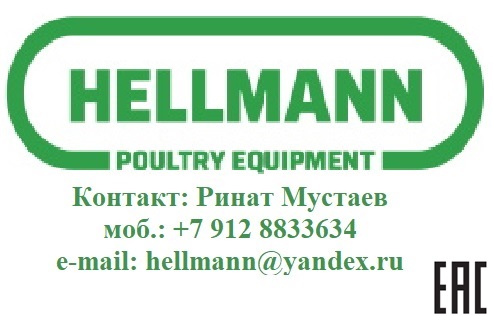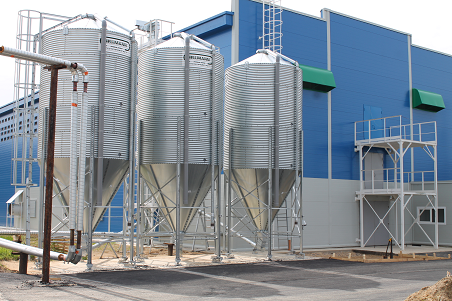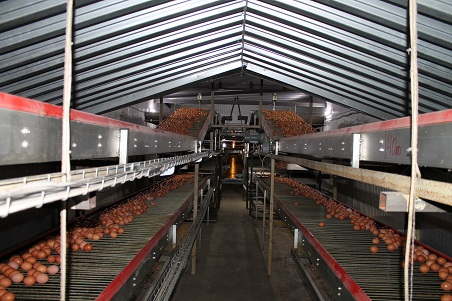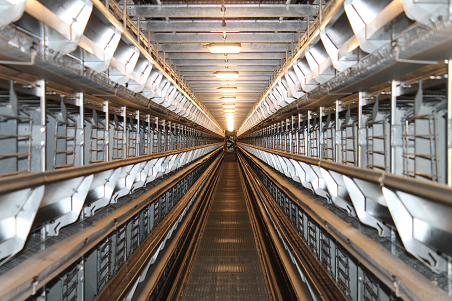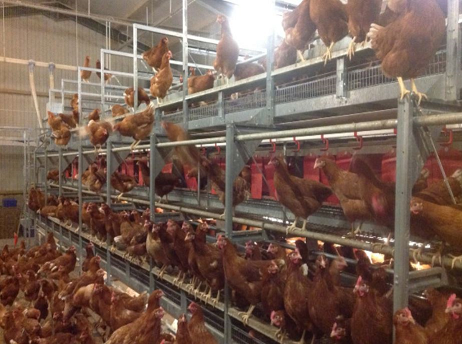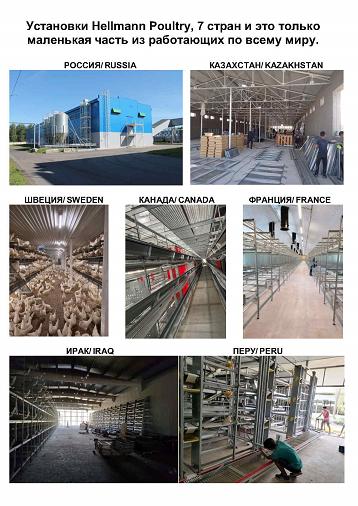
Плюсы и минусы производства птицы при свободном содержании.







Плюсы и минусы производства птицы при свободном содержании.
Интересная статья и выводы автора.
Опубликовано в соцсети по адресу https://www.facebook.com/eggsperts/
Текст на английском, но можно воспользоваться переводчиком.
Смысл должен быть понятен птицеводам.
Плюсы и минусы производства птицы при свободном содержании.
The pros and cons of free-range poultry production.
Free-range poultry production has been enjoying the benefits of a niche market until now. According to Micaela Sinclair-Black, who is completing her master’s degree in animal production at the University of Pretoria, the driving force behind free-range poultry production operating at a commercial level, is consumers who are willing to pay more for products with perceived high welfare standards.
For many producers, the free-range market may seem appealing. But what are the pros and cons of free-range poultry farming? Micaela shares her insights.
Careful consideration
The two main benefits of free-range farming are the higher value of products and relatively low input costs. In terms of the former, she cautions that producers should not simply assume they will receive a higher price for their free-range products. It is vital, she says, to identify a potential market before establishing a free-range production system.
“If you are not going to capture that additional value in terms of your market, then there will be more negatives than positives,” she says. “A critical component of free-range farming would be to identify your market. The commercial reality in South Africa is that most consumers are very price driven. Unless you have access to a high-end market where customers are not too bothered by the price, it will be very difficult to achieve higher margins.”
That said, the costs to set up a free-range system is a fraction of that of a commercial battery cage system – establishing a free-range set-up costs approximately 10% of an industrial system. “Input costs in terms of the equipment needed, are significantly less. This applies to both broilers and layers. This could especially benefit smallholder farmers who do not have a lot of input capital.”
Lower production rates
In a free-range production system, the greatest disadvantage is that production numbers will be lower for both meat and eggs. This is because the maintenance energy requirements and maintenance nutrient requirements of the chicken will be higher.
“A chicken in a free-range system will run around more. As a result, it has less energy available to produce eggs or meat. In the end, someone has to pay for that additional energy expenditure. That someone is the producer,” explains Micaela.
In the layer sector, another factor that reduces production numbers and consequently income potential, is the high rate of egg losses that occur in free-range systems. Eggs are lost due to breakages and faecal contamination. The latter is the biggest concern since it could potentially mean higher bacterial contamination, which poses a food safety risk.
“Breakages and contamination are expertly managed by cage design, which leads to almost zero losses. The floor of a battery cage is sloped, which causes the egg to roll out of the cage where the hen is laying her eggs. In a free-range system faecal contamination occurs because eggs are not always laid in the nests, but can sometimes be found on the ground below the nest. This could potentially cause contamination of pathogens such as salmonella, E. coli or Campylobacter.”
Higher mortality rates
“Another disadvantage of free-range farming is a higher mortality rate. This is caused by higher exposure to environmental pathogens and suboptimal environmental conditions, especially in terms of temperature,” says Micaela.
An added consideration is the spectrum of light that can be perceived by chickens. Chickens’ eyes are completely different to human eyes; they can perceive the ultra-violet (UV) range of light that people cannot. Studies have shown that natural or direct sunlight can reduce the performance of hens, whether it be for meat or eggs, compared to the blue-green light found in a jungle or forest.
“The fact that most free-range systems do not use lights, has implications for production. If you only rely on sunlight you will have fewer hours of light compared to darkness, which translates into lower egg production rates. This factor reduces production numbers in autumn and winter. This issue can easily be solved by adding lights to your free-range system.”
A final factor to consider is the reduction of carcass value due to deformed muscle development (dorsal myopathy). This is caused by the excessive flapping of wings in a free-range system, which causes the muscles to appear deformed. To consumers this carcass quality is less desirable, which means the carcass cannot be sold whole and must be processed. This reduces the income for the farmer.
The happiness conundrum
Micaela says that measuring the ‘happiness’ of chickens is a bit of a conundrum. “Happy is perhaps not the right word to use. Instead, we should consider the fulfilment of chickens’ biological instincts.
“Chickens’ inherent behaviour includes scratching around for food, nest building and dust bathing. If you place a battery cage chicken in a free-range environment, it will immediately start showing typical animal behaviour. Research in the European Union has shown that adding dust baths to hen houses improves animal welfare. These are things that hens like to do. It is naturally built into them, even if they have never done it before,” she explains.
“Some aspects of free-range farming are also not ideal for chickens. For example, a chicken is a prey animal. As such, it will naturally experience higher stress levels in an open field. The domesticated chicken breeds we know today all originated from the ancient red junglefowl that dwelled in thick canopies of trees. Chickens like hiding in dark corners rather than running around on open fields, which makes them feel exposed and unprotected.”
Micaela says although consumers might think they know what makes free-range chickens better than battery caged chickens, they are merely applying human values or expectations of what makes people happy onto the animals.
To go free-range or not?
There are a number of factors farmers must consider when weighing up the decisions to go free-range: Access to the right market, input costs versus potential production losses, animal welfare, and consumers’ perceptions. – Ursula Human, FarmBiz
For more information or references, contact the author at ursula@plaasmedia.co.za.
Опубликовано в соцсети по адресу https://www.facebook.com/eggsperts/
Текст на английском, но можно воспользоваться переводчиком.
Смысл должен быть понятен птицеводам.
Плюсы и минусы производства птицы при свободном содержании.
The pros and cons of free-range poultry production.
Free-range poultry production has been enjoying the benefits of a niche market until now. According to Micaela Sinclair-Black, who is completing her master’s degree in animal production at the University of Pretoria, the driving force behind free-range poultry production operating at a commercial level, is consumers who are willing to pay more for products with perceived high welfare standards.
For many producers, the free-range market may seem appealing. But what are the pros and cons of free-range poultry farming? Micaela shares her insights.
Careful consideration
The two main benefits of free-range farming are the higher value of products and relatively low input costs. In terms of the former, she cautions that producers should not simply assume they will receive a higher price for their free-range products. It is vital, she says, to identify a potential market before establishing a free-range production system.
“If you are not going to capture that additional value in terms of your market, then there will be more negatives than positives,” she says. “A critical component of free-range farming would be to identify your market. The commercial reality in South Africa is that most consumers are very price driven. Unless you have access to a high-end market where customers are not too bothered by the price, it will be very difficult to achieve higher margins.”
That said, the costs to set up a free-range system is a fraction of that of a commercial battery cage system – establishing a free-range set-up costs approximately 10% of an industrial system. “Input costs in terms of the equipment needed, are significantly less. This applies to both broilers and layers. This could especially benefit smallholder farmers who do not have a lot of input capital.”
Lower production rates
In a free-range production system, the greatest disadvantage is that production numbers will be lower for both meat and eggs. This is because the maintenance energy requirements and maintenance nutrient requirements of the chicken will be higher.
“A chicken in a free-range system will run around more. As a result, it has less energy available to produce eggs or meat. In the end, someone has to pay for that additional energy expenditure. That someone is the producer,” explains Micaela.
In the layer sector, another factor that reduces production numbers and consequently income potential, is the high rate of egg losses that occur in free-range systems. Eggs are lost due to breakages and faecal contamination. The latter is the biggest concern since it could potentially mean higher bacterial contamination, which poses a food safety risk.
“Breakages and contamination are expertly managed by cage design, which leads to almost zero losses. The floor of a battery cage is sloped, which causes the egg to roll out of the cage where the hen is laying her eggs. In a free-range system faecal contamination occurs because eggs are not always laid in the nests, but can sometimes be found on the ground below the nest. This could potentially cause contamination of pathogens such as salmonella, E. coli or Campylobacter.”
Higher mortality rates
“Another disadvantage of free-range farming is a higher mortality rate. This is caused by higher exposure to environmental pathogens and suboptimal environmental conditions, especially in terms of temperature,” says Micaela.
An added consideration is the spectrum of light that can be perceived by chickens. Chickens’ eyes are completely different to human eyes; they can perceive the ultra-violet (UV) range of light that people cannot. Studies have shown that natural or direct sunlight can reduce the performance of hens, whether it be for meat or eggs, compared to the blue-green light found in a jungle or forest.
“The fact that most free-range systems do not use lights, has implications for production. If you only rely on sunlight you will have fewer hours of light compared to darkness, which translates into lower egg production rates. This factor reduces production numbers in autumn and winter. This issue can easily be solved by adding lights to your free-range system.”
A final factor to consider is the reduction of carcass value due to deformed muscle development (dorsal myopathy). This is caused by the excessive flapping of wings in a free-range system, which causes the muscles to appear deformed. To consumers this carcass quality is less desirable, which means the carcass cannot be sold whole and must be processed. This reduces the income for the farmer.
The happiness conundrum
Micaela says that measuring the ‘happiness’ of chickens is a bit of a conundrum. “Happy is perhaps not the right word to use. Instead, we should consider the fulfilment of chickens’ biological instincts.
“Chickens’ inherent behaviour includes scratching around for food, nest building and dust bathing. If you place a battery cage chicken in a free-range environment, it will immediately start showing typical animal behaviour. Research in the European Union has shown that adding dust baths to hen houses improves animal welfare. These are things that hens like to do. It is naturally built into them, even if they have never done it before,” she explains.
“Some aspects of free-range farming are also not ideal for chickens. For example, a chicken is a prey animal. As such, it will naturally experience higher stress levels in an open field. The domesticated chicken breeds we know today all originated from the ancient red junglefowl that dwelled in thick canopies of trees. Chickens like hiding in dark corners rather than running around on open fields, which makes them feel exposed and unprotected.”
Micaela says although consumers might think they know what makes free-range chickens better than battery caged chickens, they are merely applying human values or expectations of what makes people happy onto the animals.
To go free-range or not?
There are a number of factors farmers must consider when weighing up the decisions to go free-range: Access to the right market, input costs versus potential production losses, animal welfare, and consumers’ perceptions. – Ursula Human, FarmBiz
For more information or references, contact the author at ursula@plaasmedia.co.za.
